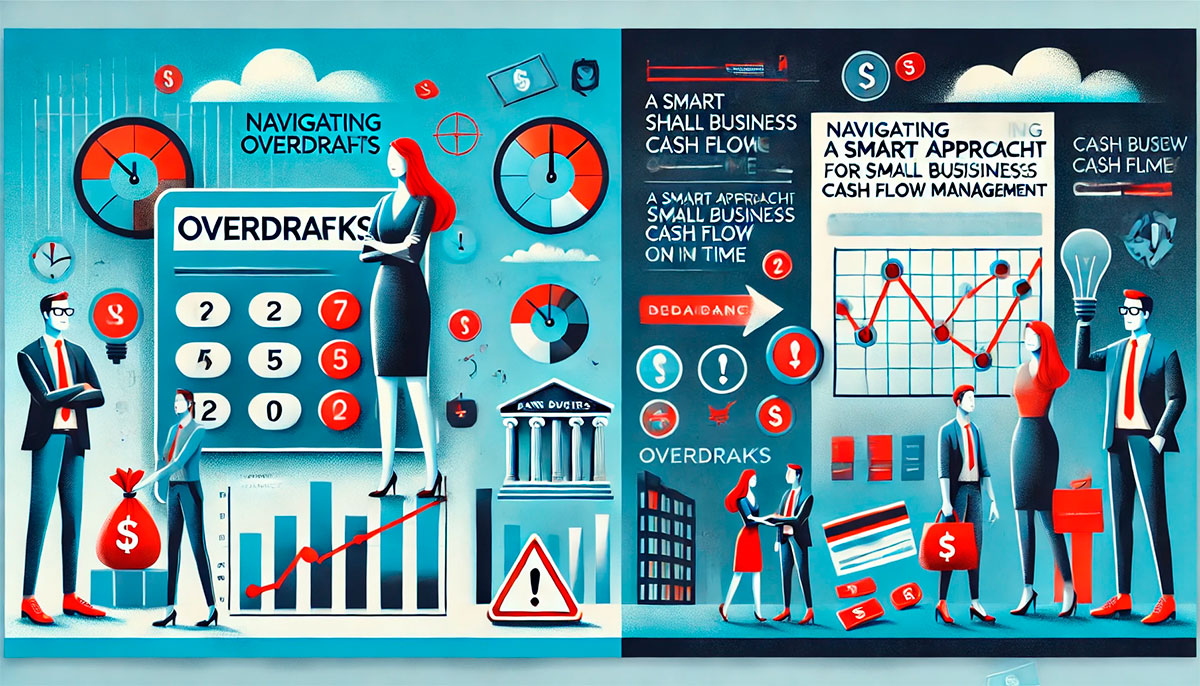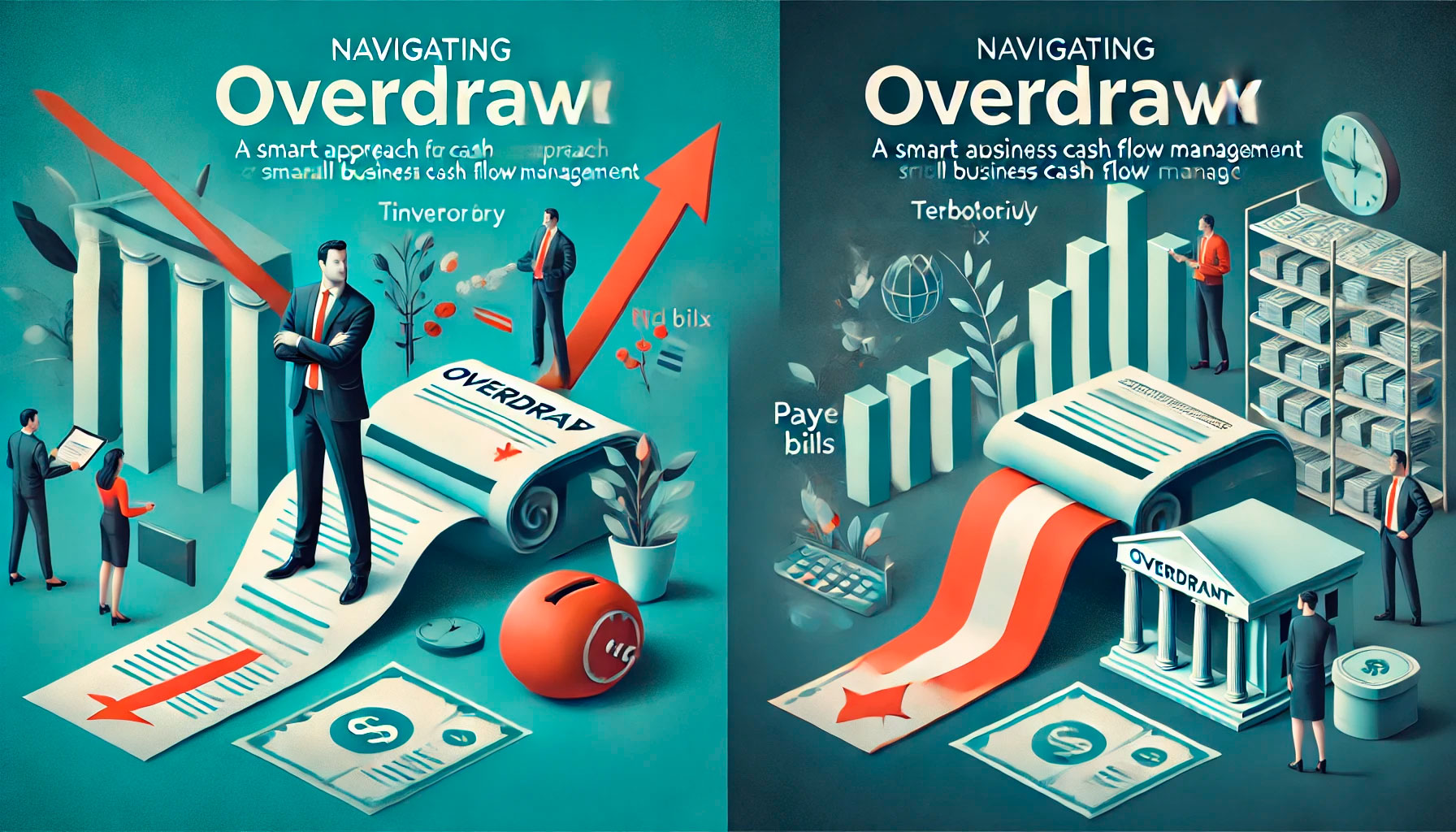Managing cash flow is one of the biggest challenges small businesses face, and sometimes unexpected expenses or delayed payments can put a strain on day-to-day operations. An overdraft facility can provide a flexible solution to these short-term cash flow issues. However, like any financial tool, an overdraft should be used strategically. In this article, we’ll explore when an overdraft is favourable for small businesses and how it can be used effectively to support financial stability and growth.
Understanding Overdrafts
An overdraft is a type of short-term credit that allows businesses to withdraw more money than they have in their account, up to a pre-agreed limit. Unlike a loan, an overdraft doesn’t require fixed repayments. Instead, businesses can use the overdraft as needed and pay interest only on the amount borrowed. This makes it a flexible financial tool for covering temporary cash shortages.
Overdrafts are typically linked to the business’s current account and can be arranged with a bank or financial institution. However, they come with fees and interest charges, so it’s important to understand when using an overdraft is a smart financial decision.
When an Overdraft Is Favourable
1. Managing Short-Term Cash Flow Gaps
One of the most common and favourable uses of an overdraft is to manage short-term cash flow gaps. Small businesses often face delays in payments from customers or need to pay suppliers before receiving income from sales. An overdraft can bridge this gap, allowing the business to continue operating without disruption.
For example, if a business needs to pay for inventory or staff wages but is waiting on a large payment from a client, an overdraft can provide the liquidity needed to cover these immediate expenses. This ensures the business remains operational while avoiding late fees or penalties from suppliers.
2. Covering Unexpected Expenses
Unexpected expenses are a reality for any small business, whether it’s equipment breakdown, emergency repairs, or a sudden spike in operational costs. In such situations, an overdraft can be a favourable option, offering immediate access to funds without the need for a formal loan application.
Because overdrafts are generally quicker to access than traditional loans, they can be a lifeline when urgent financial support is required. Instead of drawing from long-term savings or cutting other essential expenses, businesses can use the overdraft to handle unforeseen costs while keeping operations running smoothly.
3. Seasonal Businesses with Fluctuating Income
For businesses that experience seasonal fluctuations in revenue, such as those in retail, tourism, or agriculture, an overdraft can be particularly beneficial. During slow periods, when income is lower, an overdraft can provide the working capital needed to cover ongoing expenses. When business picks up during peak seasons, the overdraft can be repaid quickly.
This flexibility makes overdrafts ideal for managing the cyclical nature of certain industries. By smoothing out cash flow during low-revenue months, businesses can maintain stability and be well-positioned to take advantage of busy periods.
4. Avoiding Loan Commitments
For small businesses that need temporary funds but don’t want the long-term commitment of a loan, an overdraft is a favourable alternative. Loans typically come with fixed repayments and long-term obligations, which may not be ideal for businesses that only need a short-term financial solution.
With an overdraft, there are no fixed repayment schedules, and the business only pays interest on the amount used. This level of flexibility can make an overdraft a better option for short-term needs, especially if the business anticipates repaying the borrowed amount quickly.

When an Overdraft May Not Be the Best Option
1. Long-Term Funding Needs
While overdrafts are excellent for short-term cash flow solutions, they are not designed for long-term funding. Overdrafts typically have higher interest rates than traditional loans, and using them over an extended period can become costly. If your business needs capital for expansion, large purchases, or long-term investments, a loan with lower interest rates and structured repayments is likely a better option.
For instance, if your business is looking to invest in new equipment or expand to a new location, taking out a term loan would provide more favourable terms and lower interest rates compared to relying on an overdraft.
2. Excessive Reliance on Overdraft
Frequent and excessive use of an overdraft can signal underlying cash flow problems within the business. While occasional use of an overdraft to cover temporary gaps is normal, relying on it consistently may indicate deeper financial instability. In these cases, it’s essential to review the business’s cash flow management strategies and consider other financing options that offer more sustainable solutions.
For example, businesses that repeatedly use their overdraft to cover operating expenses may need to reassess their pricing models, payment terms with clients, or look for ways to reduce costs. Over-reliance on an overdraft can also negatively impact your relationship with lenders and affect future credit applications.
3. High Interest and Fees
Overdrafts often come with high interest rates and fees compared to other forms of credit. Businesses must carefully consider the cost of borrowing through an overdraft, especially if it will be used for more than just a short-term gap. The flexibility of an overdraft can be appealing, but the costs can quickly add up if it’s not repaid in a timely manner.
If your business can secure a line of credit or short-term loan with lower interest rates, it may be a more cost-effective solution for managing cash flow. Comparing rates and fees before committing to an overdraft can save your business money in the long run.
Best Practices for Using an Overdraft
To make the most of an overdraft facility, it’s important to use it strategically and responsibly. Here are a few best practices:
- Only use an overdraft for short-term needs: Avoid using it for long-term projects or ongoing expenses that would be better suited to other financing options.
- Monitor cash flow regularly: Keep a close eye on your cash flow to ensure that you’re not relying on an overdraft more than necessary. Regular cash flow reviews can help identify problem areas before they become bigger issues.
- Repay the overdraft as quickly as possible: The faster you can repay the amount borrowed, the less you will pay in interest and fees.
- Negotiate better terms: If your business regularly uses an overdraft, talk to your bank about lowering fees or interest rates. Banks may be willing to negotiate better terms for long-term customers.
Conclusion
An overdraft can be a highly favourable tool for small businesses when used correctly. It provides flexibility for managing short-term cash flow gaps, covering unexpected expenses, and supporting seasonal fluctuations. However, overdrafts should be used sparingly, as they come with higher costs and are not suitable for long-term financing needs. By using overdrafts strategically and monitoring your cash flow, you can maintain financial stability and keep your business on a path to growth.



